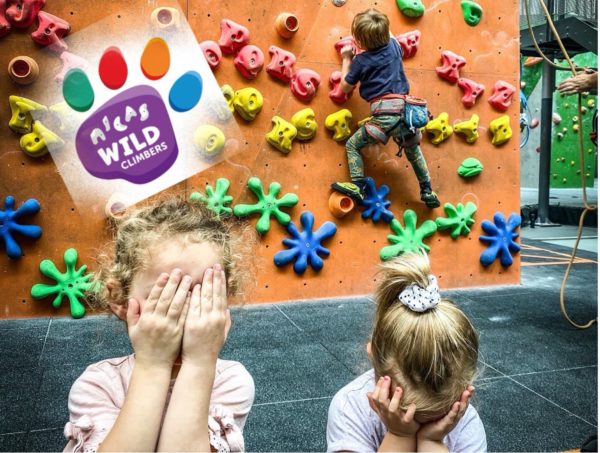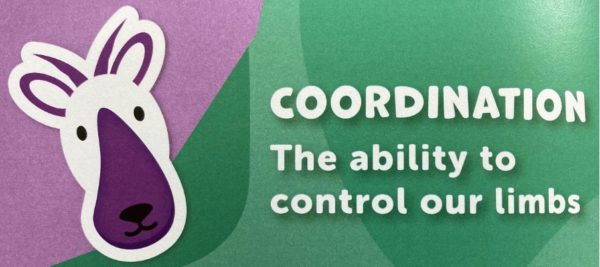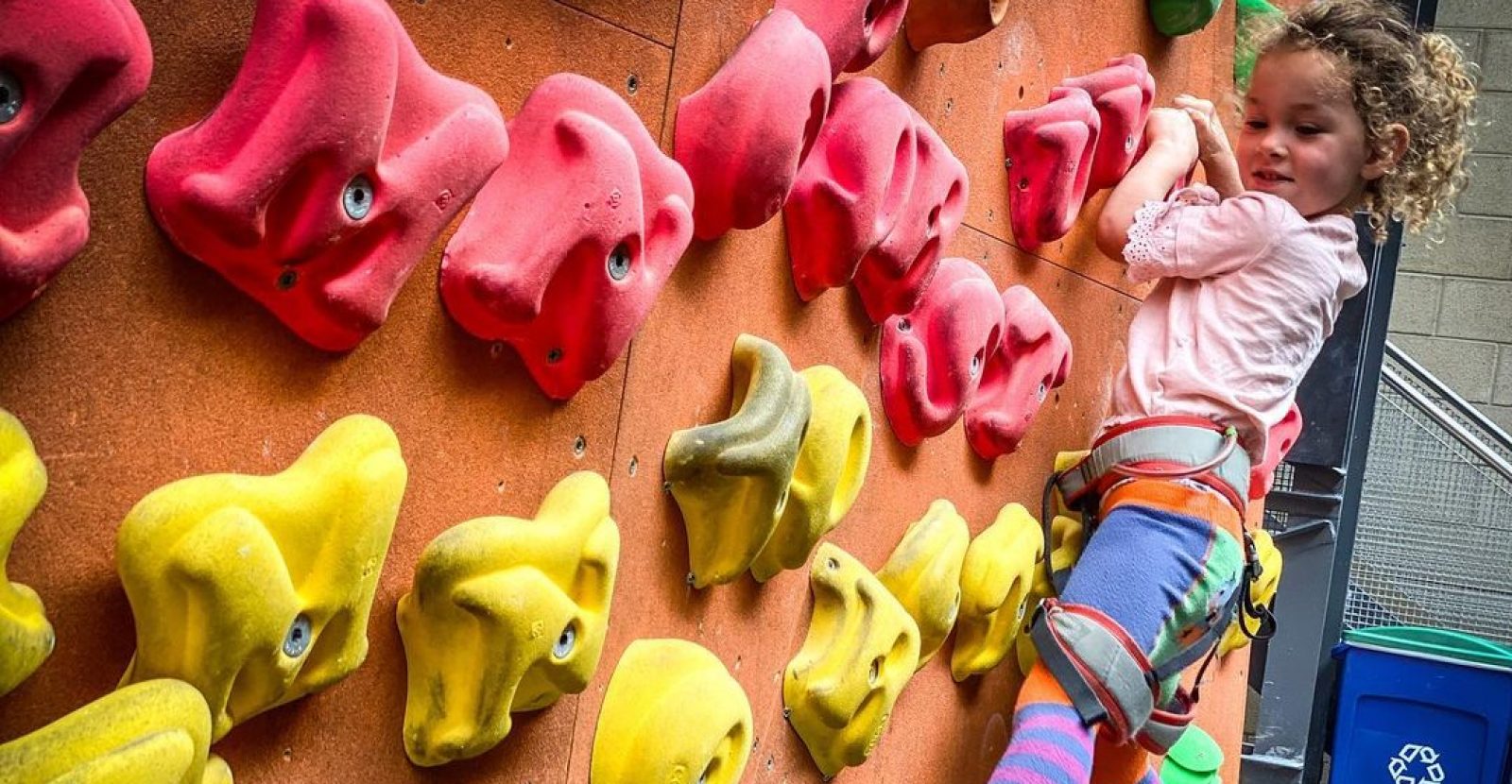
Ask any of our instructors who have taken one of our regular Climbing Introductions for 4-8-year-olds and they will tell you that these sessions usually are about so much more than just the climbing. They are full of stories, fun and adventure. We hear about spiderman and climb like a monkey, we learn facts about dinosaurs and sharks and that glittery t-shirts turn you into a stronger climber. So when NICAS (the National Indoor Climbing Award Scheme) released the new Wild Climbers program and gave us the chance to trial it, we were excited to see what this colourful scheme would have in store for our youngest climbers.

The coordinated Mountain Goat
The Wild Climbers scheme was partly developed as a way to prepare young climbers from 4 to 7 years old for the NICAS scheme which they can enter from age 7. By providing a fun and playful way into climbing, the little ones would not only get a chance to slowly get comfortable with climbing but also get used to the general climbing environment. With a slower pace and in a small group, the kids are able to build their confidence on and off the wall and develop the skills they need to progress in their climbing.

The agile Monkey
Looking at the program and who it was designed for, we knew from the start that the Wild Climbers sessions had to be all about creativity, variety and fun. Even though climbing plays a major role in the sessions, we can offer so much more with them. The kids train a set of different skills: Coordination, agility, balance, communication, focus and teamwork.
The children naturally always bring loads of energy with them and are ready to move and play so it doesn’t take much to get different activities and games going which work the mentioned skills but are also just a lot of fun.
As much as the 6 skills will help our climbers to improve their climbing (so much so that a lot of the games and activities have now also found their way into our other sessions outside the Wild Climbers scheme), they are also amazing things to work on at an age when movement and motor skills are still developing. Climbing in itself is just as useful for that development. Not only does climbing train body awareness. It can improve confidence, resilience, help work through fear and anxiety and is a great way to learn about responsibility, teamwork, how to take care of others and build trust.

The focussed Lion
The whole program is centred around the logbook and collecting animal paw stickers for doing well at the different skills. For us, the focus however is not on achievement but on fun. We want our little climbers to have a positive experience with climbing and with the various games and activities it is always possible to create a fun and engaging learning experience for everybody.

Even though the focus is on having a great time, having a chance to sit all down together at the end of the session and celebrate each other with high fives and stickers for what we did well in is always a great way to finish the day! A sense of achievement goes a long way!

The balancing Flamingo
It was important to us to get the balance just right on different levels. One aspect we looked at was safety. While we run our normal Introduction sessions with 8 children on them, we were aware that those sessions were centred around climbing with all children involved in the process. The Wild Climbers sessions were set up to be far more dynamic with changing activities and less structured games and slightly younger climbers. Not only did we want to be able to facilitate this safely in a sometimes busy centre, we also want to be able to give every climber the attention they deserve to have a go, improve and have a great time. So our Wild Climbers sessions run with a maximum of 4 kids on them.
Another balance that we had to figure out is what kind of activities to choose. While our normal Introductions are build around climbing and climbing alone, the children very quickly get into the swing of the session. The rules for the games and activities on the Wild Climbers sessions, however, change with every game and even though the kids bring a lot of energy which we want to use that can become overwhelming.
The other side is that it is also a skill to be still: balancing, waiting your turn, keeping others safe when climbing, paying attention when placing your foot, spotting an open carabiner. All these aspects are also skills that can be practiced.

The communicating Elephant
What does a successful Wild Climbers session look like? It looks like fun. But for that we need to find out what those 4 little individuals in front of us need to have fun. So far, I have found that the answer is almost always: Imagination. If I have learned anything from the Wild Climbers sessions so far, it is to let yourself be inspired by the brilliant little minds in front of you and roll with it.
We walked like storks and climbed like monkeys, we had cheeky Iron Man kidnapping a kangaroo and a Lego lady who needed rescuing from the top of the wall, we saved animals from a river (even though I was told by little Tom that we actually didn’t need to save the Koala because Koalas can swim – my bad!).

The teamworking Wolf
Climbing naturally encourages people to work together: we keep each other safe and look out for each other, we give each other tips where to put hands and feet, we cheer each other on, we celebrate if someone did well and we are there for each other if someone needs help or gets scared. But my favourite thing about those sessions is what we learn from each other when we get to work together for that 1 hour. Yes, I help them practice all their different skills but they teach me a lot, too:
How to walk into every new situation with an open mind. How to enjoy the process of learning something new. How to make every little thing more enjoyable with imagination, fun and laughter. How to be unapologetically yourself. AND that a T-Rex weighs the same as two elephants…
Bookings for Wild Climbers are now open. Click here to book.

Blog by Parthian Climbing Reading Instructor Clara Doebler
